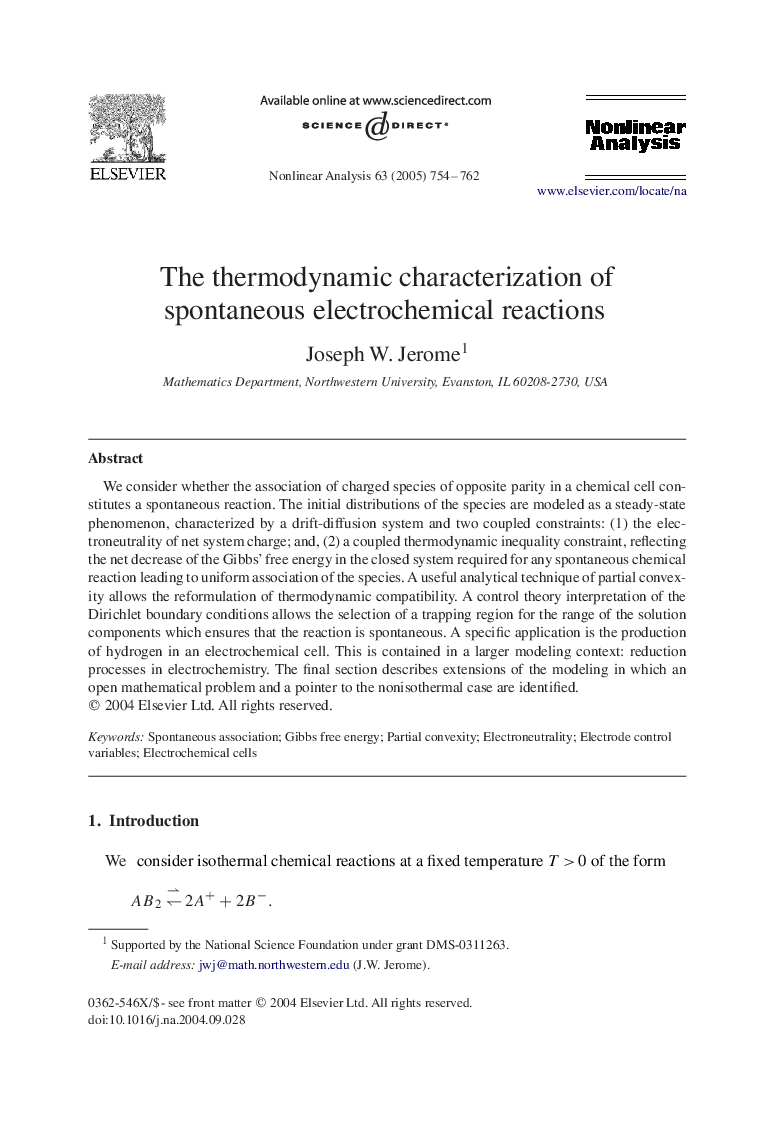| Article ID | Journal | Published Year | Pages | File Type |
|---|---|---|---|---|
| 9718171 | Nonlinear Analysis: Theory, Methods & Applications | 2005 | 9 Pages |
Abstract
We consider whether the association of charged species of opposite parity in a chemical cell constitutes a spontaneous reaction. The initial distributions of the species are modeled as a steady-state phenomenon, characterized by a drift-diffusion system and two coupled constraints: (1) the electroneutrality of net system charge; and, (2) a coupled thermodynamic inequality constraint, reflecting the net decrease of the Gibbs' free energy in the closed system required for any spontaneous chemical reaction leading to uniform association of the species. A useful analytical technique of partial convexity allows the reformulation of thermodynamic compatibility. A control theory interpretation of the Dirichlet boundary conditions allows the selection of a trapping region for the range of the solution components which ensures that the reaction is spontaneous. A specific application is the production of hydrogen in an electrochemical cell. This is contained in a larger modeling context: reduction processes in electrochemistry. The final section describes extensions of the modeling in which an open mathematical problem and a pointer to the nonisothermal case are identified.
Related Topics
Physical Sciences and Engineering
Engineering
Engineering (General)
Authors
Joseph W. Jerome,
